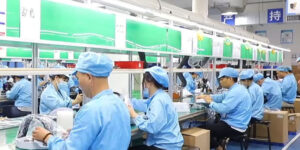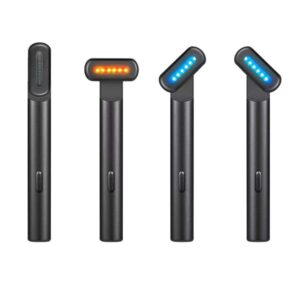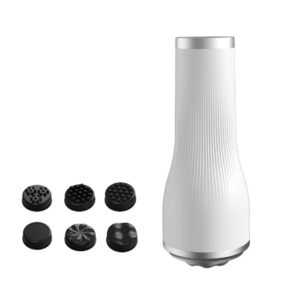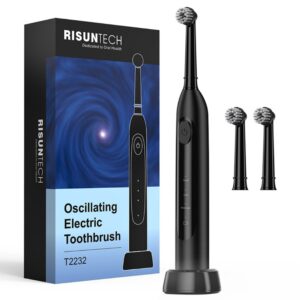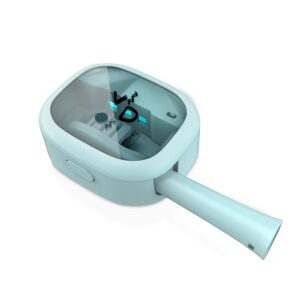Summary
The rising popularity of at-home hair removal devices is a notable trend in the beauty and personal care industry, driven by advancements in technology, changing consumer preferences, and a growing demand for convenience. As individuals increasingly seek effective and private solutions for managing unwanted hair, a wide array of devices, including laser and Intense Pulsed Light (IPL) systems, have emerged on the market. These innovations offer users the ability to achieve professional-level results from the comfort of their own homes, significantly altering traditional grooming practices that historically required salon visits.
The growth of this market can be attributed to several factors, including an increase in disposable income, effective marketing strategies, and the alignment of products with fast-paced lifestyles. Many consumers, particularly women, are attracted to the flexibility and cost savings associated with at-home hair removal options, which allow for self-scheduling and reduced reliance on salon services. Additionally, social media influencers and celebrity endorsements have played a crucial role in promoting these devices, enhancing their visibility and driving consumer interest.
However, the surge in at-home hair removal device usage has not been without controversy. Safety concerns regarding the effectiveness and risks associated with improper use—such as skin irritation and burns—have raised questions about the suitability of these products for all skin types. Furthermore, the market faces challenges related to potential saturation in developed regions, necessitating a careful balance between innovation and consumer trust in the safety and efficacy of these devices.
As the at-home hair removal market continues to expand, projected to reach approximately $2.9 billion by 2034, the integration of sustainability practices and inclusive marketing strategies will play an essential role in appealing to the environmentally conscious consumer. The evolving landscape of hair removal technology reflects broader shifts in beauty standards and personal care, indicating a significant transformation in how individuals approach grooming in contemporary society.
Table of Contents
History
Ancient Practices and Early Innovations
Hair removal has been an integral part of human grooming for thousands of years, with practices evolving significantly over time. Ancient Egyptians, for instance, utilized rudimentary tools for hair removal, including early razors made from sharpened stones and bronze, which were often employed for both hygienic and aesthetic purposes. This early adoption highlights the cultural significance of hair removal in various societies, where body hair often symbolized social status and cleanliness.
The Evolution of Hair Removal Tools
The timeline of hair removal saw notable advancements throughout history. By the early 20th century, the first commercially available safety razor was introduced in 1904, primarily targeting men. This marked a significant shift in grooming practices, making shaving safer and more accessible. It wasn’t until 1915 that women had their own version of razors available to them, reflecting changing societal norms around femininity and grooming.
The 1910s and 1920s witnessed a surge in hair removal among women, largely influenced by fashion trends such as sleeveless dresses that necessitated the removal of underarm hair. Advertisements from this era actively promoted hair removal, fundamentally altering women’s grooming habits and leading to the establishment of smooth skin as a beauty standard by the mid-20th century.
Modern Developments
Entering the 21st century, hair removal methods have been revolutionized by technological advancements. Techniques such as Intense Pulsed Light (IPL) and sophisticated laser hair removal have become prominent, providing individuals with long-lasting results and minimizing discomfort during the process. These innovations have transformed hair removal from a chore into a more efficient, effective routine.
Furthermore, there has been a significant rise in consumer preference for at-home hair removal devices, driven by the desire for convenience and the effectiveness of new products. Many contemporary devices are designed to offer long-lasting results, reducing the frequency of treatments needed, thus catering to the increasing demand for time-saving grooming solutions.
This evolution from rudimentary tools in ancient civilizations to advanced at-home devices today underscores the ongoing cultural and technological shifts that continue to shape hair removal practices worldwide.
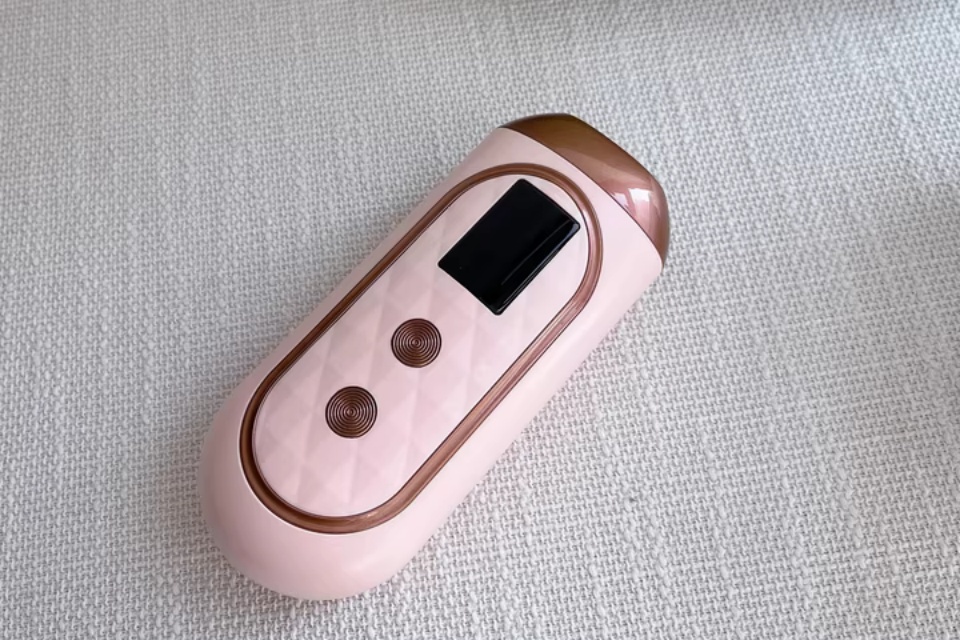
Types of At-Home Hair Removal Devices
At-home hair removal devices have gained immense popularity due to their convenience and effectiveness. The main types of at-home devices include laser hair removal systems, intense pulsed light (IPL) devices, and other hair removal tools.
Laser Hair Removal Devices
At-home laser hair removal devices utilize focused light to target hair follicles. These devices work by emitting light absorbed by the melanin in the hair, transforming into heat energy to damage the follicle and prevent further hair growth. Over time, with consistent use, these devices can significantly reduce hair regrowth. However, it is crucial to note that only FDA-approved devices should be used, as unapproved devices can lead to ineffective results and even skin damage, including burns and pigmentation issues.
Intense Pulsed Light (IPL) Devices
IPL devices are among the most common at-home hair removal options. They use a broad spectrum of light to target hair follicles, making them versatile for treating larger areas quickly. While IPL devices are popular for their affordability and ease of use, they are not suitable for all skin tones. They tend to work best on individuals with fair to olive skin tones and dark hair. Unlike true laser devices, IPL treatments may require more frequent sessions due to their lower power output compared to professional treatments.
Other Hair Removal Tools
In addition to laser and IPL devices, at-home hair removal methods also include mechanical options like tweezers and dermaplaning tools. These methods, while effective for small areas, do not provide the long-term hair reduction that laser or IPL devices offer. However, they can be useful for maintaining areas between laser treatments or for those who prefer a more traditional approach to hair removal.
As the technology in home hair removal devices continues to evolve, consumers are likely to see improvements in safety and efficacy, making these devices an increasingly attractive option for managing unwanted hair.
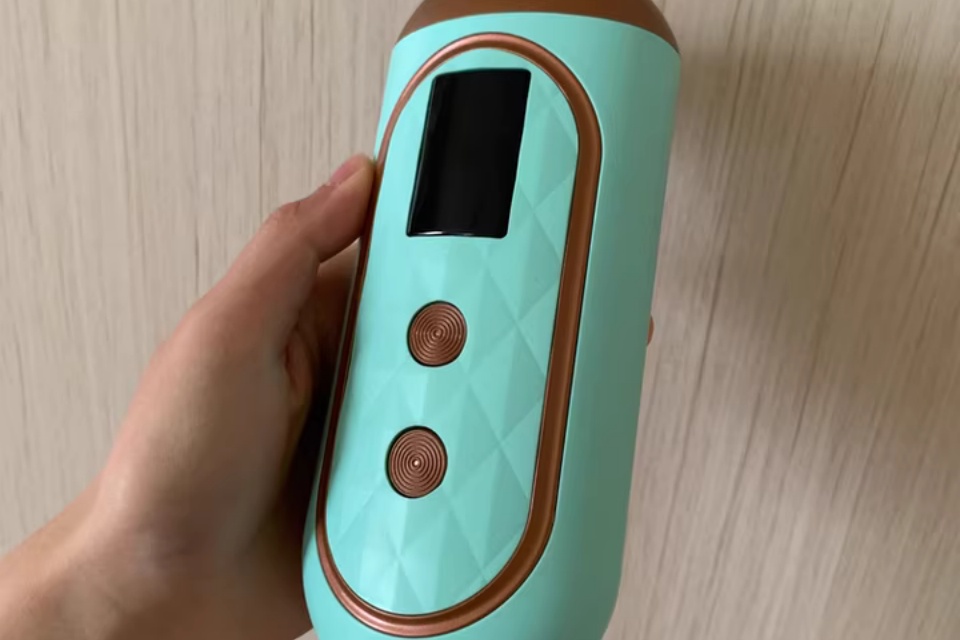
Factors Contributing to Popularity
The surge in popularity of at-home hair removal devices can be attributed to several interrelated factors that align with changing consumer preferences and lifestyle dynamics.
Increased Disposable Income
One significant contributor to the market growth is the high disposable income in various countries, which has led to an increase in spending on personal care products, including hair removal solutions. Manufacturers have responded by producing a wide range of affordable products targeted at both low and high-income earners, broadening their consumer base. Additionally, rising beauty service costs are driving more individuals towards at-home alternatives, further enhancing market demand.
Marketing Strategies and Consumer Engagement
Effective marketing strategies have also played a pivotal role in attracting consumers. Many brands employ promotional tactics such as discounts, free gifts, and “buy one get one free” offers, which resonate with consumers looking for value. The influence of social media and celebrity endorsements has amplified interest in depilatory creams, as influencers share their grooming routines, stimulating consumer curiosity and demand. Furthermore, the ease of purchasing through e-commerce platforms has made it simpler for consumers to access a variety of depilatory products, allowing them to make informed decisions and experiment with different options.
Convenience and Lifestyle Alignment
The fast-paced lifestyle prevalent in many regions has prompted consumers to seek convenient, at-home hair removal solutions. Many individuals prefer the flexibility and privacy that home devices offer compared to scheduling salon appointments. This preference is particularly strong among women, who make up a substantial portion of the market and often face higher costs and scheduling conflicts associated with salon visits.
Technological Advancements
Advancements in technology have significantly enhanced the effectiveness and safety of at-home hair removal devices. Innovations such as Intense Pulsed Light (IPL) technology and other electrical and chemical-based methods have made these devices more appealing and efficient, thereby increasing consumer confidence in their use. The integration of smart features and improved design continues to attract tech-savvy consumers, particularly younger demographics who prioritize efficiency and convenience.
Sustainability Trends
Another emerging factor influencing consumer choices is the growing emphasis on sustainability. With consumers becoming more environmentally conscious, there is an increasing demand for products that use eco-friendly materials and sustainable production methods. Brands that highlight their commitment to these practices are likely to build greater loyalty among this conscientious consumer segment.

Market Trends
Segmentation and Growth Drivers
The at-home hair removal devices market is characterized by a clear segmentation based on application and pricing. The market is divided into online and offline sales channels, with online retail anticipated to experience faster growth due to the increasing popularity of e-commerce shopping platforms. Pricing categories range from devices under US$100 to those priced above US$500, with the under US$100 segment expected to capture the largest market share, driven by affordability and accessibility.
Demographic trends are significant contributors to market expansion, with the U.S. Census Bureau projecting growth among younger consumers who favor convenient, technology-based beauty solutions. This trend is bolstered by an increasing number of dual-income households and professional women seeking time-saving options for personal grooming.
Regional Dynamics
Regionally, North America and Europe lead the market due to higher disposable incomes and increased awareness of personal care products. However, the Asia Pacific region is poised for the highest growth rate during the forecast period, with market size projected to grow from approximately USD 100 million in 2023 to USD 220 million by 2032, representing a CAGR of 9%. Factors such as rising disposable incomes, heightened awareness of personal grooming, and the booming e-commerce sector significantly contribute to this trend.
The growth of distribution channels is further influenced by aggressive marketing and promotional activities. Companies are increasingly utilizing online advertising, social media campaigns, and in-store promotions to engage a broader audience. The integration of omnichannel retail strategies enhances consumer convenience and supports market growth.
Consumer Preferences and Innovations
Consumer behavior shows that women predominantly drive the adoption of at-home hair removal technologies, although interest among male consumers is also increasing, particularly in the laser and IPL segments. Female consumers are drawn to the control and privacy that at-home devices provide, alongside long-term cost savings compared to salon treatments. The influence of social media and beauty influencers plays a significant role in shaping perceptions and increasing confidence in the effectiveness of these technologies.
Technological innovation is another key trend, with advancements such as AI-powered treatment optimization and enhanced safety features driving the development of more effective devices tailored to a variety of skin tones and hair colors. Brands are heavily investing in research to create kinder and more efficient hair removal solutions, marking a significant shift in the market dynamics towards more sophisticated product offerings.
Sustainability and Market Saturation
As consumer awareness of environmental issues grows, sustainability has emerged as a crucial trend within the beauty industry. Brands emphasizing eco-friendly practices and sustainable materials are likely to foster stronger customer loyalty among environmentally conscious consumers.
However, concerns regarding market saturation are surfacing in developed regions, where rapid growth may surpass sustainable adoption rates. Regulatory scrutiny around advertising claims has increased, compelling manufacturers to substantiate their effectiveness claims with scientific evidence, thereby moderating promotional strategies.
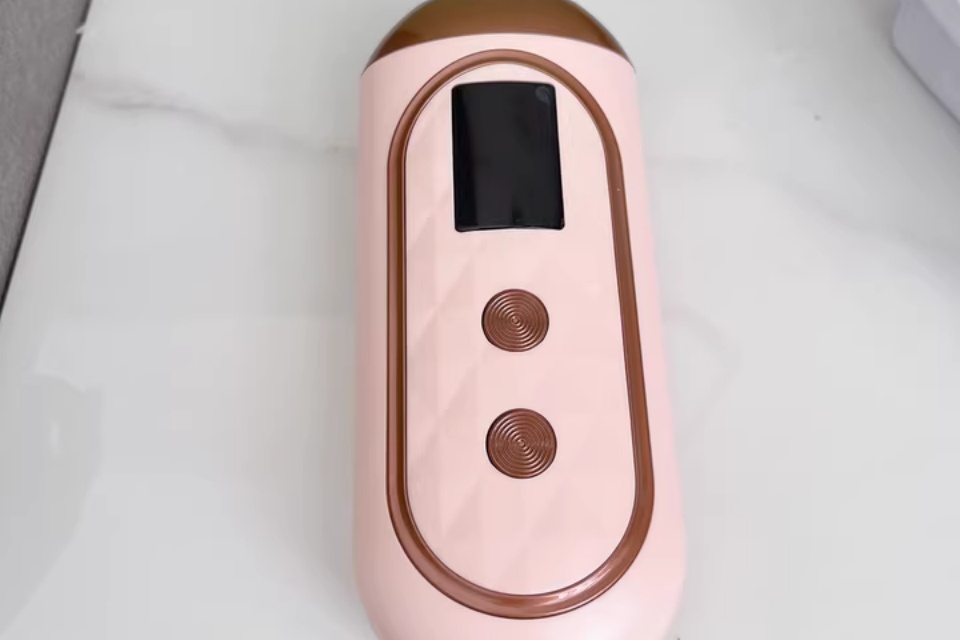
Safety and Effectiveness
The safety and effectiveness of at-home hair removal devices, particularly those using Intense Pulsed Light (IPL) technology, have garnered significant attention as their popularity continues to rise. While these devices offer convenience and privacy, it is essential to understand the associated risks and how they compare to professional treatments.
Risks Associated with At-Home Devices
Improper use of at-home laser hair removal devices can lead to various adverse effects, including skin irritation, burns, and pigmentation changes.
Lack of Medical Evaluation: Unlike professional treatments that involve a thorough evaluation of skin type and condition, home devices often lack this critical assessment. This can result in inappropriate device settings, especially for individuals with darker skin tones who are at increased risk for burns and hyperpigmentation due to higher melanin levels.
Inadequate Safety Protocols: At-home devices may not have the same comprehensive safety measures as those employed in clinical settings. Users are at risk of experiencing burns, blisters, and scarring due to improper application or excessive use on the same area.
Potential for Eye Injury: One of the more serious risks of using IPL devices at home is eye injury, which can occur if proper protective measures are not followed. The intense light can cause damage to the eye, leading to vision problems or permanent damage.
Effectiveness of At-Home Devices
While at-home devices can provide satisfactory results, they generally require a more extended commitment compared to professional treatments. According to experts, at-home devices are likened to a “20-minute walk” as opposed to the more intense and efficient “two-hour workout” of professional laser treatments.
Treatment Frequency and Schedule: At-home treatments typically require frequent use—often recommended twice weekly for several months. This does not align well with natural hair growth cycles, potentially resulting in less effective hair reduction compared to professionally timed sessions.
Power and Customization: Professional treatments utilize high-power equipment and personalized settings based on an individual’s unique skin and hair characteristics. In contrast, at-home devices lack this level of customization, which can lead to suboptimal results.
Maintenance Needs: While at-home devices can be effective for maintenance after a series of professional sessions, relying solely on them may necessitate significantly more treatments to achieve and maintain desired results.
User Experiences
User experiences with at-home hair removal devices vary widely, influenced by factors such as device performance, comfort, and individual skin and hair characteristics. Many users report significant satisfaction with the effectiveness of these devices, particularly when they align with their specific needs. For instance, a panel of 270 women tested various at-home devices over 6 to 12 weeks, yielding positive feedback on efficacy and comfort levels, with most participants experiencing noticeable hair reduction by the end of the trial period.
Treatment Efficiency and Comfort
A key factor in user satisfaction is the efficiency and comfort of the devices. Users have noted that some devices provide quick treatments that are nearly pain-free, which enhances the overall experience. For example, one device was described as “basically pain-free,” and many testers reported a significant reduction in hair regrowth after just three weeks of use. Features such as ergonomic design and auto skin tone sensors further contribute to user comfort and ease of use, making the hair removal process more accessible.
Treatment Personalization
Personalization is another significant aspect of user experiences. Many devices are designed to adapt to individual hair and skin types, which can improve treatment effectiveness. Users have expressed appreciation for devices that offer tailored settings, enabling them to achieve better results with fewer treatments compared to traditional salon options. This adaptability is particularly important as it allows individuals to manage their unique needs without the risks associated with improper usage.
Overall Value and Long-Term Results
Despite the higher upfront costs of professional treatments, many users find that at-home devices offer better long-term value. This sentiment is often rooted in the convenience of self-scheduling and the ability to maintain treatments over time without ongoing salon visits. Users also report a strong sense of control over their hair removal routines, leading to greater satisfaction with the results and the overall experience.
Influencing Factors
Social influences, such as recommendations from beauty influencers and peers, play a significant role in shaping user experiences and perceptions of at-home devices. As more women embrace these technologies, their comfort and willingness to adopt multi-step beauty routines increase, fostering a community of shared experiences that further validate the effectiveness of at-home hair removal solutions.
Future Prospects
The at-home hair removal devices market is poised for significant growth, driven by several key trends and consumer demands. As the market is currently valued at approximately $1.5 billion in 2024, it is projected to expand at a compound annual growth rate (CAGR) of about 7.3%, reaching around $2.9 billion by 2034. This growth is attributed to a rising emphasis on self-grooming and the convenience of at-home treatments, particularly among younger demographics who prioritize cost-effectiveness and ease of use.
Market Segmentation and Performance
The market is segmented into various categories, with facial hair removal holding a substantial market share of 30%, driven by increased self-grooming trends. The body segment, capturing 25% of the market, is expected to grow as brands diversify their offerings to cater to a broader consumer base. Legs, underarms, and bikini line products account for a combined market share of 15%, reflecting niche demands that present substantial growth opportunities.
Technological innovations continue to reshape the landscape, with advancements such as smart skin tone sensors contributing to a 45% increase in consumer purchases. Furthermore, multifunctional devices that incorporate Intense Pulsed Light (IPL) technology alongside skin rejuvenation features are becoming increasingly preferred, indicating a shift towards personalized and efficient beauty solutions.
Consumer Trends and Sustainability
Sustainability is emerging as a critical trend, as consumers increasingly favor products that utilize eco-friendly materials and packaging. Companies that prioritize sustainable practices may gain loyalty from a growing segment of environmentally conscious consumers. The launch of products made from sustainable materials, such as Panasonic’s Palm Shaver utilizing Nagori, illustrates this shift towards environmentally responsible consumer goods. Gender-neutral marketing also plays a pivotal role, with brands catering to diverse consumers by promoting inclusivity.
Challenges and Market Dynamics
Despite the promising growth outlook, the market faces challenges that could hinder its expansion. Safety concerns regarding the use of laser hair removal devices pose risks, with reports of skin irritation and other adverse effects impacting consumer confidence. As such, it is vital for manufacturers to emphasize the importance of proper usage and provide clear safety guidelines. Additionally, market saturation in developed regions may lead to increased scrutiny of marketing practices, requiring brands to substantiate their effectiveness claims with scientific evidence.
Regional Growth Potential
The Asia-Pacific region presents a particularly robust growth opportunity, with market share expected to reach around 20% by 2034 and a notable CAGR of 10% driven by urbanization, rising disposable incomes, and evolving beauty standards. Strategic investments in marketing and localized product development will be crucial for companies looking to capitalize on these emerging markets.


